Our short but detailed comparison article explains the key differences between the two technologies of dehumidifier, allowing you to make an informed decision.
Desiccant
Compressor
Top Rated Compressor vs Desiccant Dehumidifiers
| Dehumidifiers | Name | |
|---|---|---|
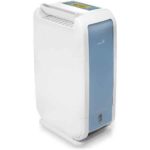 CHECK PRICE | Recommended Desiccant Ivation | Type: Desiccant Capacity: 13 Pint Tank Capacity: 0.5 gal Weight: 13.96 lbs Coverage: 270 sqft Suitable For: Small Areas Lifespan: Renewable Warranty: 1 Years Continuous Drain Hose |
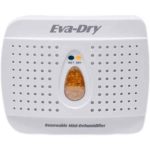 CHECK PRICE | Runner Up Eva Dry | Type: Desiccant Capacity: Small Tank Capacity: None Weight: 14.4 oz Coverage: 37 sqft Suitable For: Small Areas Lifespan: Renewable Warranty: 5 Years |
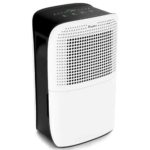 CHECK PRICE | Recommended Compressor Vacplus | Type: Compressor Capacity: 50 Pint Tank Capacity: 1.5 gal Weight: 24.20 lbs Coverage: 2000 sqft Suitable For: Mid to Large Areas Warranty: 2 Years Features: WiFi Capabilities |
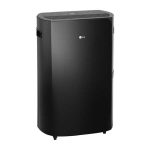 CHECK PRICE | Runner Up LG PuriCare | Type: Compressor Capacity: 50 Pint Tank Capacity: 1.5 gal Weight: 51.8 lbs Coverage: 2400 sqft Suitable For: Mid to Large Areas Warranty: 1 Years Continues Drainage with Pump Water Features: WiFi Capabilities |
Construction and Design
- Desiccant dehumidifiers are typically lighter than their compressor based counterparts. The compressor units typically weigh over 15 lbs.
- Compressor units are also less compact than their desiccant counterparts.
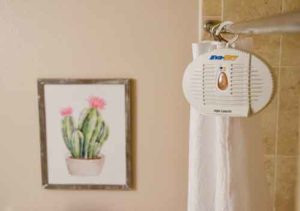
Winner: Desiccant dehumidifiers
Mode of Operation and Performance
Desiccant dehumidifiers utilize a special moisture-absorbing material, often zeolite, that’s similar to silica gel. A fan draws moist air from the surrounding environment and directs it to a gradually rotating wheel that houses the desiccant. The desiccant loses the absorbed moisture through a heating process to renew its humidity trapping capacity.
- Desiccant units don’t have coils and thus are capable of extracting moisture from diverse atmospheres, including those with low temperatures between 1°C and 15°C.
- Due to the lack of compressor parts, desiccant dehumidifiers are typically quieter than their compressor counterparts.
- Some desiccant dehumidifiers require no electricity at all to operate. The desiccant dries out naturally or by the use of batteries, making them extremely economical.
Compressor Dehumidifiers implement the condensation mechanism to extract moisture from the atmosphere. Condensation is caused by passing warm, humid air over a refrigerated coil, which effectively separates water from the air. The condensed moisture is subsequently discharged into a reservoir for disposal. Once the remaining dry air has been reheated using a warm coil, it is released back into your indoor space.
- Compressor dehumidifiers are best suited for rooms with high ambient temperatures above 15°C.
- These units are considerably more economical as regards the consumption of power. They consume less energy per hour and are, therefore, cheaper to operate.
- Compressor dehumidifiers are generally noisier than their desiccant counterparts, with most models producing a fan noise level of 40 dB.
- Major benefit of compressor dehumidifier is that they can extract moisture faster and a lot more as oppose to their counterpart.
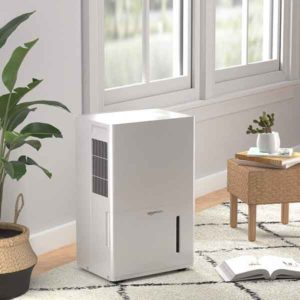
Winner: Compressor dehumidifiers
Maintenance and Durability
Desiccant dehumidifiers are considered to be extremely durable. This is largely attributable to the fact that the desiccant material doesn’t expire; you won’t need to replace or top it up.
- The mechanism utilized by the desiccant units is more straightforward as compared to the compressor based devices that comprise of far more moving parts that are susceptible to breakdown.
- The desiccant units have no refrigerant gas; the latter is often held under high pressure within the compressor based units and thus vulnerable to failure.
Winner: Desiccant Dehumidifiers
People for Whom They’re Best Suited
Following key consideration should be given when selecting desiccant dehumidifiers:
- Lightweight design makes desiccant units are an excellent choice for people looking to dehumidify smaller areas. But keep in mind desiccant is not recommended for fast extraction of moisture.
- Desiccant dehumidifiers are best suited for users who are seeking a compact device for their closets, gun safes, and crawl spaces, among other constricted areas.
- Desiccant units are the perfect choice for your bedrooms, library, baby room, and study room, among other areas requiring the peace and tranquility offered by noiseless devices.
- The desiccant units are especially ideal for areas with restricted access, including storage tanks and marine environments.
- Most desiccant dehumidifiers come with a laundry mode. This makes them a perfect addition to your laundry room, especially when looking to dry your clothes faster and without sunlight.
- Desiccant dehumidifiers are recommended for smaller areas in homes like closet, washroom, laundry room.
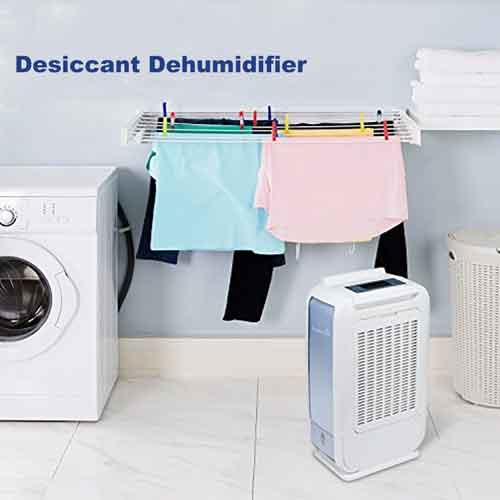
Conversely, compressor dehumidifiers will come in handy in the following scenarios:
- Due to their low consumption of electricity, we recommend the compressor based dehumidifiers for any home owner or even commercial users for faster extraction of moisture.
- Compressor dehumidifiers tend to be cheaper than their desiccant counterparts. They’re, therefore, a suitable choice for trepidation buyers looking for an inexpensive moisture absorber that will also maintain an ambient temperature in their rooms.
- The compressor units will come in handy when dehumidifying large construction sites, especially when looking to expedite the drying of concrete or plaster. The gradual dehumidification will ensure that the drying process is completed without causing cracks on the surfaces.
- Compressor dehumidifiers are recommended for full room or even entire house.
The Bottom Line
Before purchasing a dehumidifier, it’s imperative to comprehend the difference between a desiccant and a compressor unit. Having understood the various merits and demerits associated with each technology, you will be in a better position to get a unit that’s best suited to your intended application. Fortunately, we have done most of the leg work for you.
Desiccant dehumidifiers are rapidly emerging as a viable alternative to the old-fashioned compressor based units. You don’t need to worry about the ambient temperature, season, or relative humidity; they run perfectly, regardless. Desiccant dehumidifiers are also enviably quiet when operating. Even when you compare it to a compressor dehumidifier that utilizes the touted whisper-quiet technology, the desiccant unit will always be the quieter one.
However, remember that compressor units, especially the energy rated ones, use far less energy than their desiccant counterparts. Compressor units are also suitable choices for use in the late spring, summer, and early fall. During this period, the temperatures are rarely too low to cause freezing on the coils.

Hello I am looking for a 1200 square feet of basement; which type of dehumidifier would you recommend? Thank you
Hi Budowa,
Thanks for reaching out. Well it really depends on your basement humidity levels during both summer and winter. If you have a very humid basement for example, humidity levels are like 35-40% during winter and 40-60% during summer. I would recommend getting compressor based dehumidifier; and if humidity is in range of 30-40% during both seasons and you would like to manage it or keep your basement more less less humid and would like to keep the noise down then desicant would be a good option. I would recommend you to review basement dehumidifiers that we have selected based on multiple criteria. Good Luck!